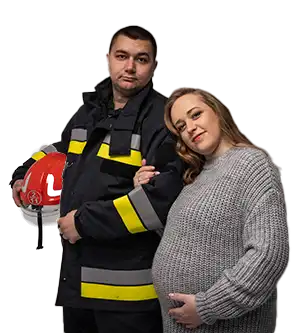
Firefighting Training Facilities May Be Highly Contaminated With PFAS Chemicals From Training Using Firefighting Foam
Thousands of firefighting stations around the country have been spraying firefighting foam on their tarmac during training exercises for decades
Tuesday, June 27, 2023 - Military, airport, and municipal firefighting stations in the US may be more contaminated with PFAS forever chemicals than anywhere else in the country. Firefighting teams trains to extinguish petroleum and jet-fuel fires regularly, about once per quarter on average, using AFFF firefighting foam. AFFF firefighting foam is made from PFAS forever chemicals. These chemicals are effective in extinguishing fires where conventional water and sand methods fail. PFAS forever chemicals have strong molecular bonds and do not biodegrade when introduced into the environment, the water, and animals that drink the water. Residents of communities near military installations, airports, and municipal and city firefighting stations are warned not to eat the fish caught in streams and rivers near these places for fear the deadly PFAS forever chemical may have bioaccumulated in the fish. To illustrate the scope of the damage PFAS chemicals may have caused to human health, consider that the rainwater that falls over all of us whenever it rains comes from evaporation from the rivers and streams that are polluted with PFAS chemicals. We are literally being blanketed with toxic PFAS forever chemicals whenever it rains. The family vegetable garden may be contaminated with PFAS forever chemicals when it rains, as are local farms. Livestock is being fed with feed that may also be contaminated with PFAS forever chemicals that bioaccumulate in the beef, chicken, and pork that we eat. No one, however, is more susceptible to developing cancer from AFFF firefighting foam than firefighters and their family members that come in contact with them. If you or a loved one have developed kidney, prostate, testicular, bladder, thyroid, or liver cancer, lymphoma, or leukemia after exposure to firefighting chemicals, you should speak with an AFFF cancer attorney. More than 1000 lawsuits have been filed against 3M, DuPont, and about a dozen other companies responsible for making and selling the deadly chemicals and failing to warn of their toxicity.
Determining the exact number of firefighters working at airports throughout the United States is challenging without access to current data. Staffing levels can vary significantly based on factors such as airport size, operational demands, and emergency response protocols. Larger airports, handling substantial air traffic and infrastructure, typically maintain dedicated fire departments with several dozen to over a hundred firefighters. Medium-sized airports tend to have smaller fire departments, employing roughly 10 to 30 firefighters. Smaller airports, especially those with limited commercial activity, may have more modest fire departments, typically employing fewer than 10 firefighters. For accurate and up-to-date information, contacting the relevant airport authorities or fire departments is recommended. According to the U.S. Department of Transportation, Federal Aviation Administration, Administrator's Fact Book (Washington, DC), there are approximately 20,000 large, small, and medium-sized airports in the country employing hundreds of thousands of individuals in the capacity to fight fires. According to Anderson Kreiger.com, " Airports that provide commercial passenger service have been required to use AFFF firefighting foam since 1988. There are currently no approved alternatives."
 OnderLaw, LLC and The Overholt Law Firm, PC -
OnderLaw, LLC and The Overholt Law Firm, PC -